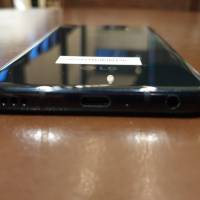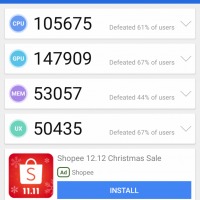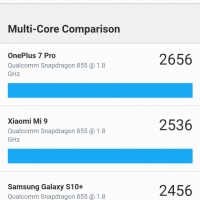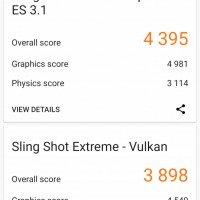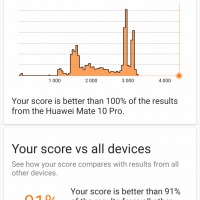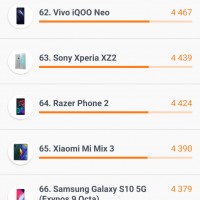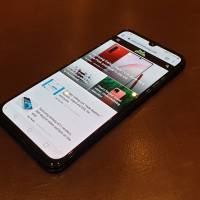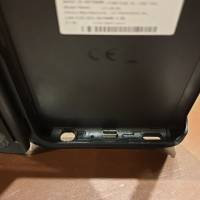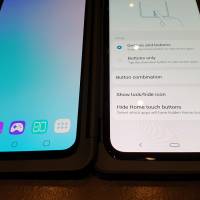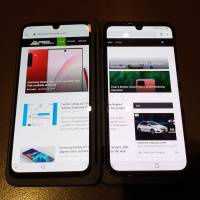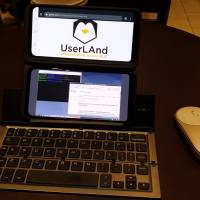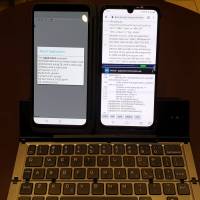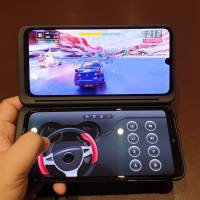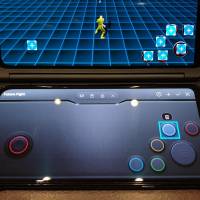
Foldables are the new obsession in the mobile tech industry but we’re still very far from the ideal, especially when it comes to durability and reliability, not to mention the price. But ever since the Sony Tablet P in 2012, some manufacturers have tried to attack that size problem from a different angle, opting to combine two very solid screens instead of a single flexible one. Earlier this year, LG joined that extremely small group with the LG V50 that left much to be desired. The LG G8X ThinQ with a Dual Screen addresses those complaints but sadly stops short of reaching that dual screen foldable phone nirvana.
Design
The LG G8X ThinQ Dual Screen is really a 2-in-1 package and, to be quite blunt, the “normal” half of the deal is sadly unexciting. Make no mistake, the LG G8X by its lonesome self is not that bad, just that it would have a hard time standing out from a crowded smartphone market place. Or perhaps it will stand out but only because of how plain and ordinary it looks when all alone.
Viewed from the front, you’d hardly find anything special about the LG G8X. Sure, the large 6.4-inch OLED screen is very nice to look at, especially with its thin bezels all around. That said, it does look like almost every other smartphone in the market that has a waterdrop notch. The edges of the phone tell a slightly different story, though, with buttons and holes on all sides. It even has a 3.5 mm headphone jack that is becoming a rarity on high-end phones these days.
The one unique design quirk of the LG G8X ThinQ can be found on its back. Like with its predecessors this year, LG opted not to give the phone any camera bump. The dual cameras are still there, of course, but they are placed beneath the same flat sheet of glass that covers the entire back of the phone. While it does make for a unique look, it also makes for a very slippery phone, with no uneven part that will stop the device from sliding off very smooth surfaces. There is no fingerprint scanner to break up the surface either with LG going for an in-display solution instead.
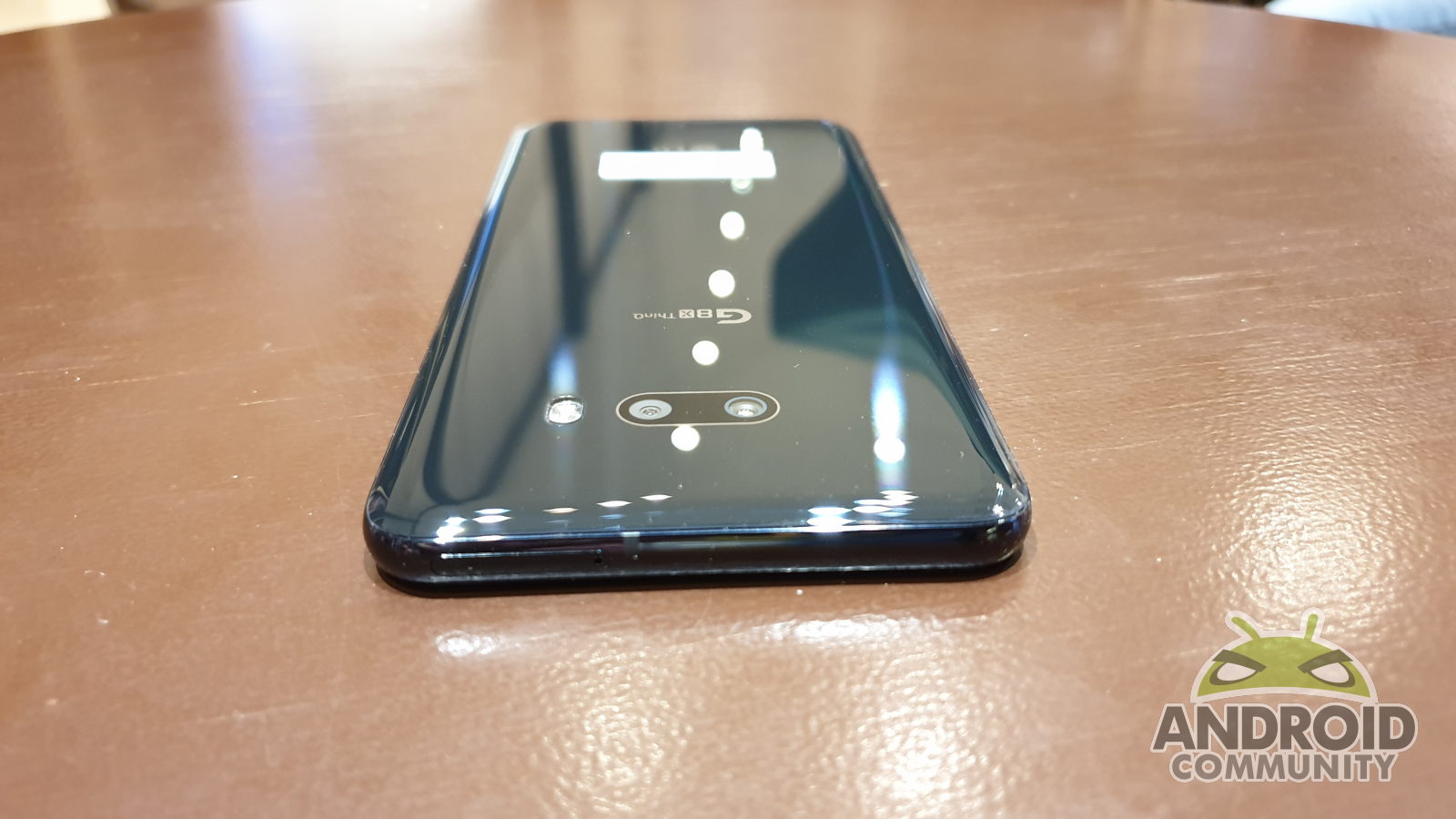
Specs and Performance
The LG G8X has received some flak over specs that don’t seem to meet the expectations of a late 2019 flagship. It misses out on the Snapdragon 855+, having oodles of RAM, and a QHD screen. There is definitely some truth to that from a technical point of view but the G8X is hardly alone in that regard. The Galaxy Note 10 doesn’t have the latest Snapdragon either and, save for the lower screen pixel density, the LG G8X actually has a lot in common with the Google Pixel 4. Of course, raw specs don’t a smartphone make and, fortunately, the LG G8X can hold its own well in the real world.
• Operating System: Android 9.0 Pie with LG UX
• CPU: Snapdragon 855 7nm Octa-core
• RAM: 6 GB
• Storage: 128 GB UFS 2.1, expandable with microSD card
• Display: 6.4-inch 2340×1080 OLED
• Main Camera: 12MP f/1.8 Dual-Pixel PDAF OIS, 13 MP f/2.4 ultrawide
• Secondary Camera: 32 MP f/1.9
• Battery: 4,000 mAh, Quick Charge 4.0/USB PD 2.0, 9W wireless charging
AnTuTu
Geekbench
3DMark
Performance
In terms of raw power, the LG G8X is definitely right up there with the big boys. If benchmarks offer more credibility, the major ones definitely put it on the same level as this year’s flagships or those from late 2018 at worst. There is definitely no slowdown or sluggishness in performance, both in more resource-intensive tasks as well as in gaming.
The one performance bottleneck for the phone might be its RAM but, as Google would have you believe, 6 GB is still plenty. It really is, unless you go overboard with multi-tasking. There were a few times when the out-of-memory or OOM killer did kick in but it was mostly with Chrome tabs, which isn’t really surprising.
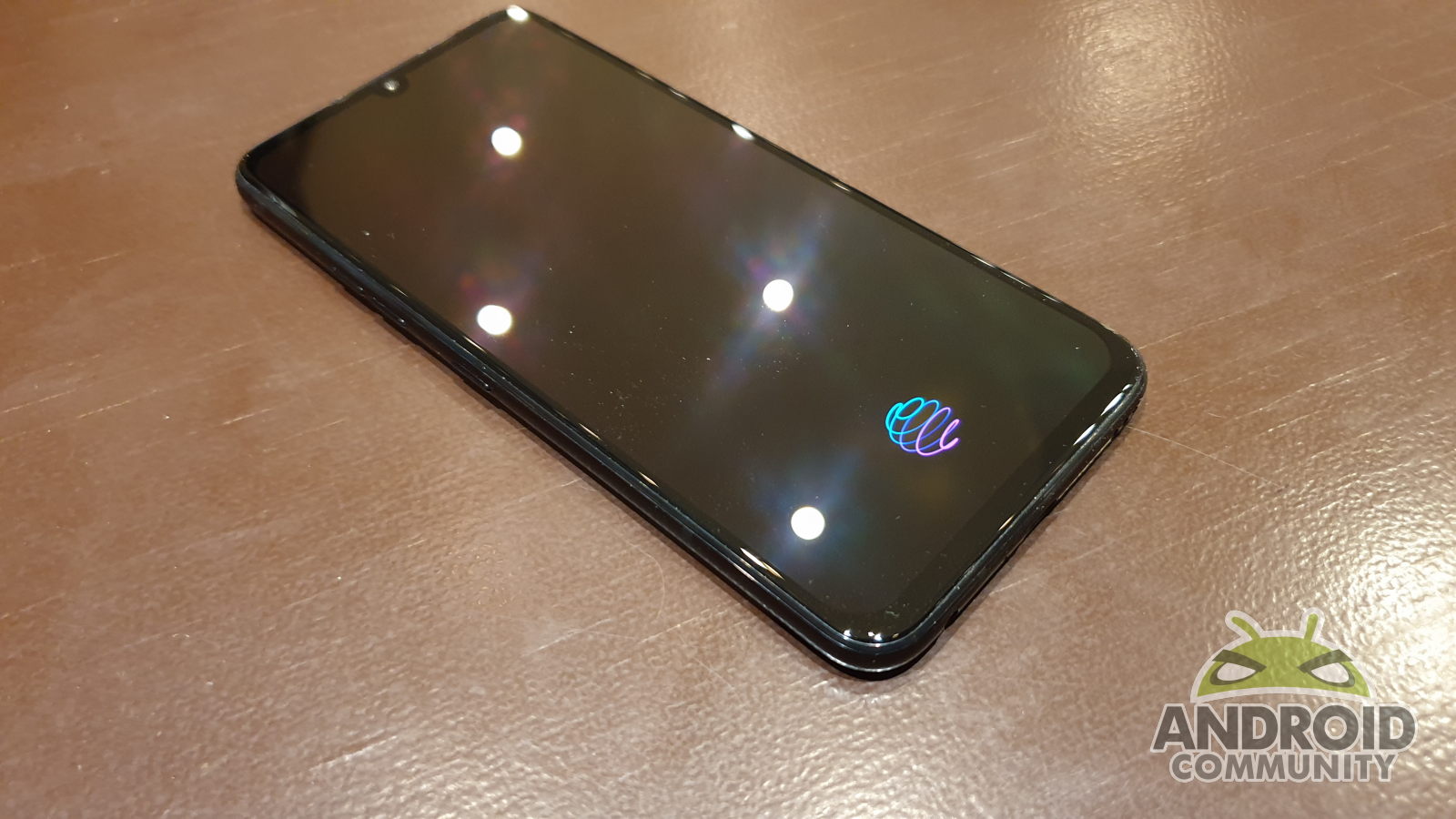
If there was a glaring flaw in the LG G8X’s hardware, it would be the shiny new in-screen fingerprint scanner, a first in an LG phone and probably one of the worst in the market today. Never mind slow, it was also rather inaccurate. With the phone locked and the screen turned off, there would be no indicator on where to place the fingerprint until after the screen was touched. Given how you are required to accurately place registered fingers in a small area, that only leads to more incorrect attempts than necessary. And with the removal of any form of face recognition, there is really no other quick and secure way to gain access to the phone.
Display and Audio
Compared to its predecessors, the LG G8 and LG V50, the LG G8X’s 2340×1080 Full HD+ screen looks like a downgrade from the 3120×1440 QHD+ of the other two. Objectively speaking, it is, especially considering the large 6.4-inch space also results in a lower 403 ppi density. There is a reason for this “necessary” downgrade, as we’ll see when we get to the meat of the G8X, but, in practice, few people might actually mind. Many of the top smartphones still only have FHD+ and those that offer higher resolutions often default to using a 1080p resolution anyway.
It definitely helps LG’s case that the screen is quite impressive. The colors it produces are vibrant and its max brightness levels can burn your eyes if you’re not too careful. It’s easy to forget the waterdrop notch is there, especially when you go for a dark theme or night mode enabled and you can always mask that in the options (you might not want to as we’ll see later).
Audio has always been one of the bright points of LG’s premium phones and the LG G8X ThinQ doesn’t disappoint, at least not entirely. Gone is the much-touted Crystal Sound tech that turned the insides of the G8 and V50 into resonance chambers. So while the G8X’s stereo speakers can get pretty loud, they also lack a bit of depth and bass compared to those two. That said, the G8X still boasts of that 32-bit Hi-Fi Quad DAC that LG has always been proud of, but you’ll need quality headphones to enjoy that.
Battery Life
The LG G8X’s core specs almost match the Pixel 4 but the one thing it can lord over Google’s flagships, including the larger Pixel 4 XL, is the battery. With a 4,000 mAh pack, the phone can easily last more than 24 hours of regular use, perhaps even two days depending on the use case. With active use, switching between LTE and Wi-Fi throughout the day and a few hours of idle time, the LG G8X still had 47% left by the 24-hour mark. Charging was also adequately fast, using LG’s official accessories, of course, going from 15% to full in under 3 hours.

And that was without the Dual Screen case that draws power from the phone. One would presume that the G8X would take a significant hit when that’s in use. Well, it does but the overall result is still impressive. With two screens in use, you can still squeeze out about 12 hours, though you can quickly degrade that to just 5 hours with non-stop use. And just because the case is attached to the phone doesn’t mean it needs to be a power drain. You can also manually turn the second screen off if you want to prolong battery life.
Cameras
LG’s phones have never been famous for their cameras, and not for the lack of trying. The company did try to innovate on some aspects, like being the first to use exactly similar hardware for normal and wide-angle to avoid the jump in quality when switching between the two. For the G8X, however, LG seems to have pulled back a bit to deliver cameras that, while good, are not exactly outstanding compared to its rivals.
Back
There are only two cameras on the LG G8X ThinQ’s back, which does look like a step back from the triple cameras on the G8 and V50. One is 12 megapixel f/1.8 main shooter while the other is a 13 megapixel f/2.4 ultra-wide camera. LG’s reasoning is both understandable yet still disappointing. It believes that few actually use telephoto cameras in everyday use and for those times that you do want to zoom in, the normal mix of low optical zoom and digital zoom are often good enough.
Fortunately for LG, the photos that the G8X produces are not so bad. Colors are bright and accurate and exposure and detail preservation in good lighting conditions. Colors are not overly saturated compared to some smartphones, which may result in almost dull but more natural-looking hues.

In the dark, it does have a dedicated Night Mode aside from the AI-detected one but, in all honesty, the improvements are not exactly staggering. There’s also a bokeh simulation but the effect isn’t that conspicuous even after you crank up the settings.
Normal Mode
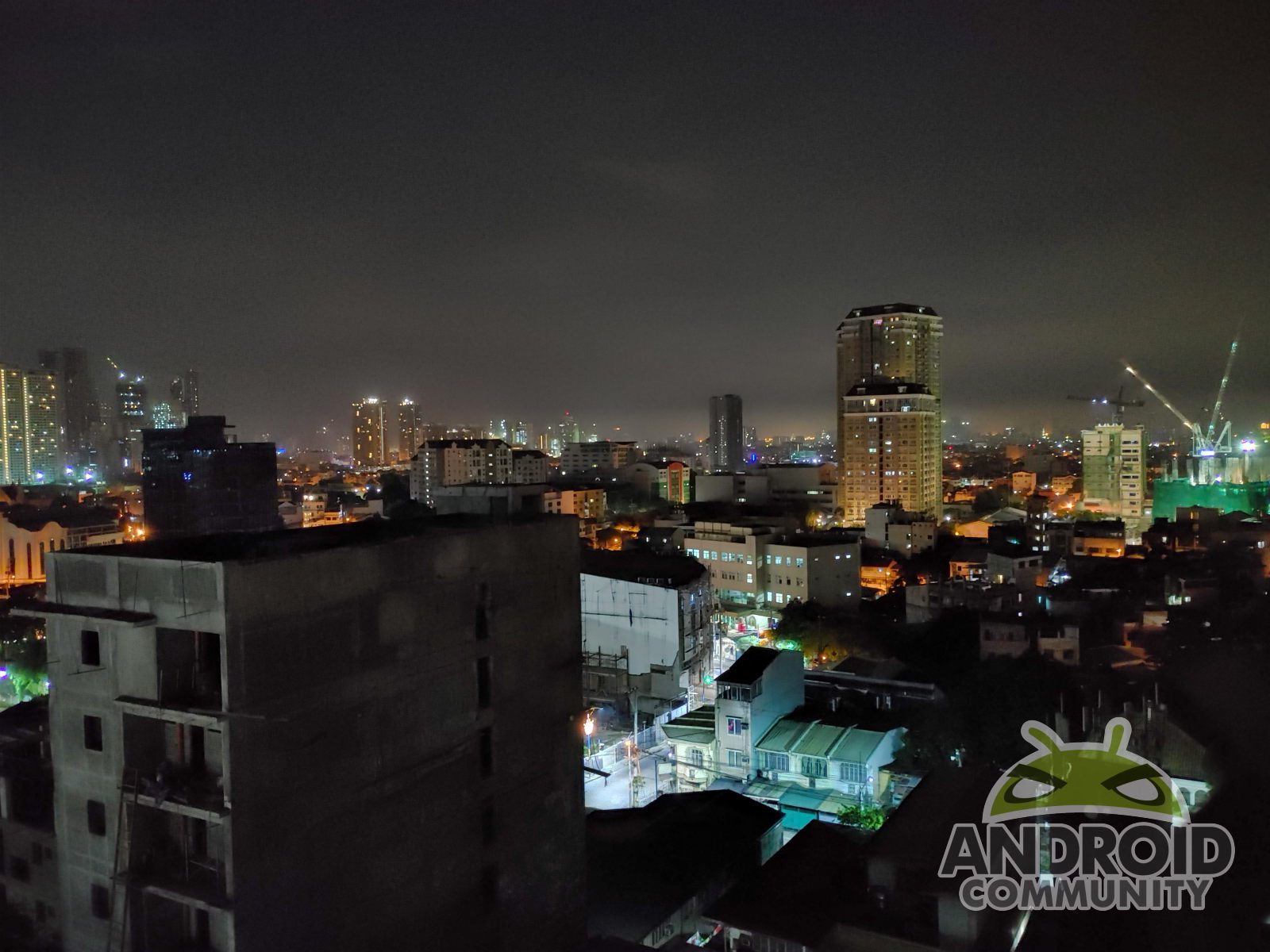
Night Mode
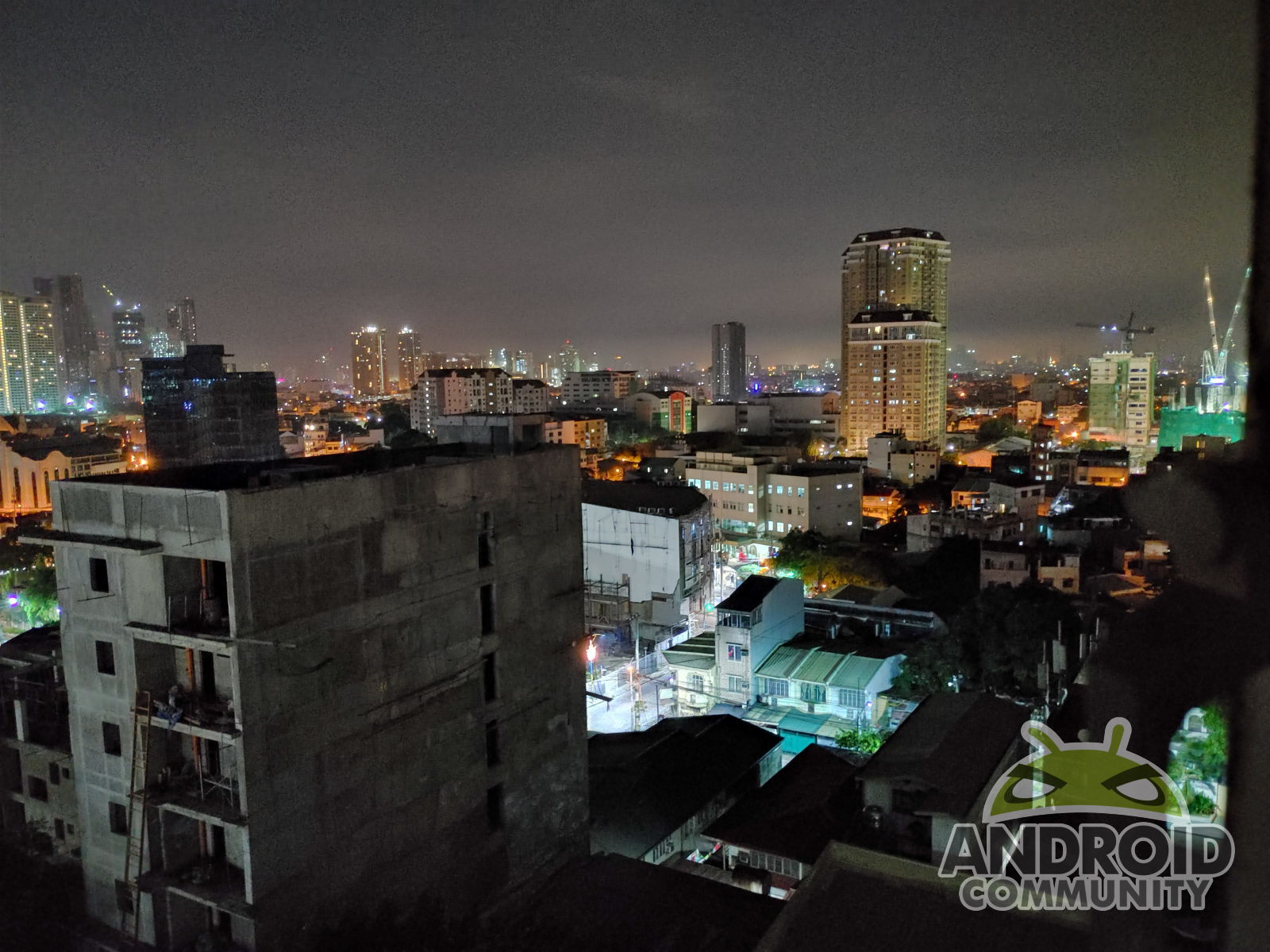
In short, the LG G8X ThinQ offers serviceable cameras that won’t embarrass you when you show off your vacation photos. Mobile photography aficionados, however, might find it significantly lacking, even with all the bells and whistles, like AI scene detection, manual controls, and various modes.
Front
It may seem like LG splurged on the front camera with a 32 megapixel f/1.9 shooter. That may be partly because it has removed almost everything else that was found on the LG G8, including the 3D Time-of-Flight (ToF) sensor. It means that the phone is neither capable of the air hand gestures its predecessor boasted of nor of higher-quality bokeh simulations.
The good news is that the G8X does perform well. The bad news is that it might not perform to expectations given the high-end hardware. There are, in particular, some blurring errors in portrait mode if you look close enough though, generally speaking, the effects are pretty decent and pleasing. The bokeh effect is strangely stronger here than with the back side’s dual cameras. A bonus is the distance you can achieve when holding the phone with Dual Screen case as shown here.
Dual Screen
And now we get to the actual meat of the LG G8X ThinQ, the part that actually makes it worth talking about in the first place. It might be unfair to glorify what is technically an accessory but, without the Dual Screen, the G8X isn’t just less than ordinary, it also makes the concessions and compromises pointless as well.
The Case

The Dual Screen is practically a bulky folio case whose cover has a built-in touch screen that’s identical to the one on the LG G8X itself. In concept, it’s similar to the Dual Screen first introduced with the LG V50 ThinQ. In practice, LG clearly spent a lot of time trying to address the biggest pain points of the first-gen accessory.
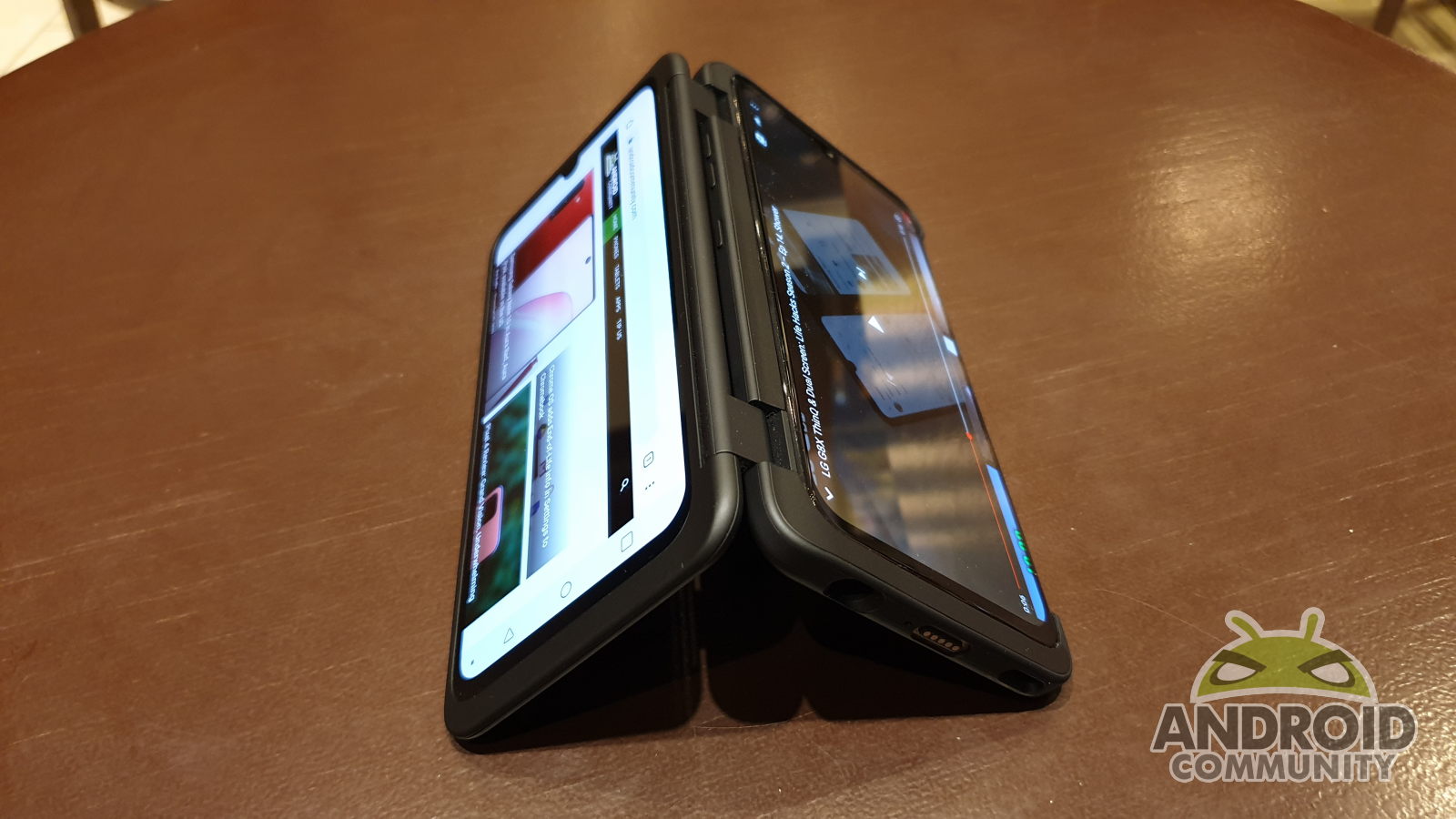
For one, the G8X now slots into the case to connect to a USB-C plug for both power and data. Compared to the combination of Bluetooth and Pogo pins, this results in faster communication between the two halves and better battery life savings. Also unlike the LG V50’s version, the case can now lock into any angle and position you desire, though there are certain angles where the cover will close down or lie flat automatically. This allows for more varied uses like tent mode.
It’s not all perfect though. By using the phone’s USB-C port, LG had to devise a new connector for charging the phone while in the Dual Screen case. It’s reminiscent of Apple’s old MagSafe connector for MacBooks but with few of the desirable traits. In addition to potentially losing the adapter, it is easy to knock it off the connection with the phone. While it can also be used to transfer files to a PC, any other form of USB-C connection seems to be off the table. Fortunately, the case does still allow for the LG G8X to charge wirelessly.

The Screen
The Dual Screen case would, of course, be pointless if not for that second touch screen. That, too, has changed since the V50 earlier this year but not all for the better. For the G8X ThinQ, LG wanted both the phone screen and the second screen to be completely identical to address the complaints about the previous version where the phone had a higher resolution than the second screen.
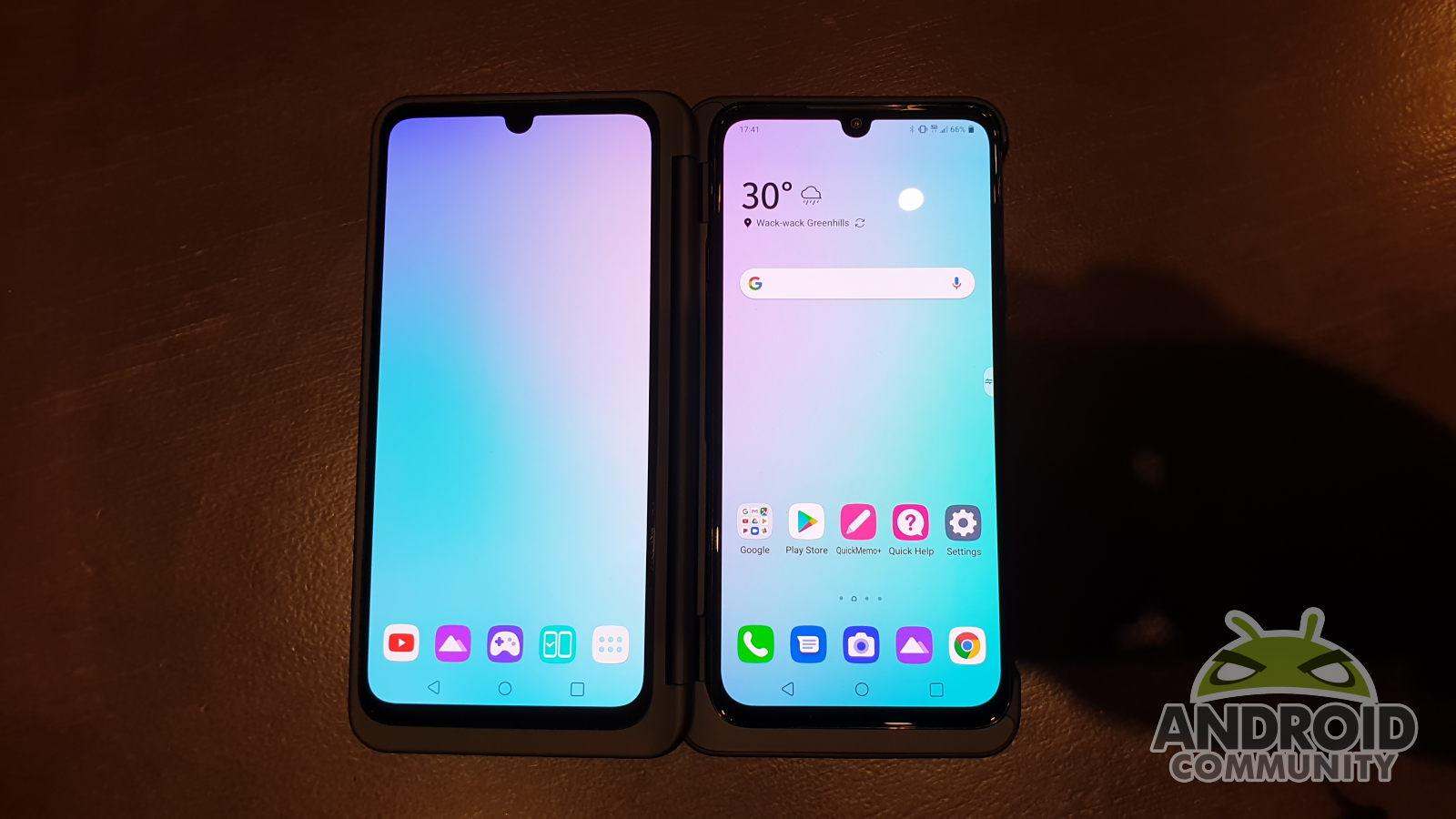
While understandable, that decision lead to a few undesirable quirks. For one, the LG G8X’s own screen resolution was downgraded to 2340×1080 to match the second screen. That second screen, on the other hand, had a notch that had nothing to warrant the cutout. LG explained that it was simply because they used the exact same panel on both screens to deliver a consistent and similar experience no matter what screen you’re looking at.
Except it wasn’t exactly a consistent experience at all, other than the resolution and the optional synced brightness. For one, the phone’s screen is noticeably warmer in tone, even after you adjust all the knobs available. When you try to hide the phone’s notch in the Settings, it doesn’t do the same for the other screen, causing an even bigger imbalance. The symmetry between the two screens only works on paper and in the factory but not in the real world. Hopefully, a firmware update can fix some of that.
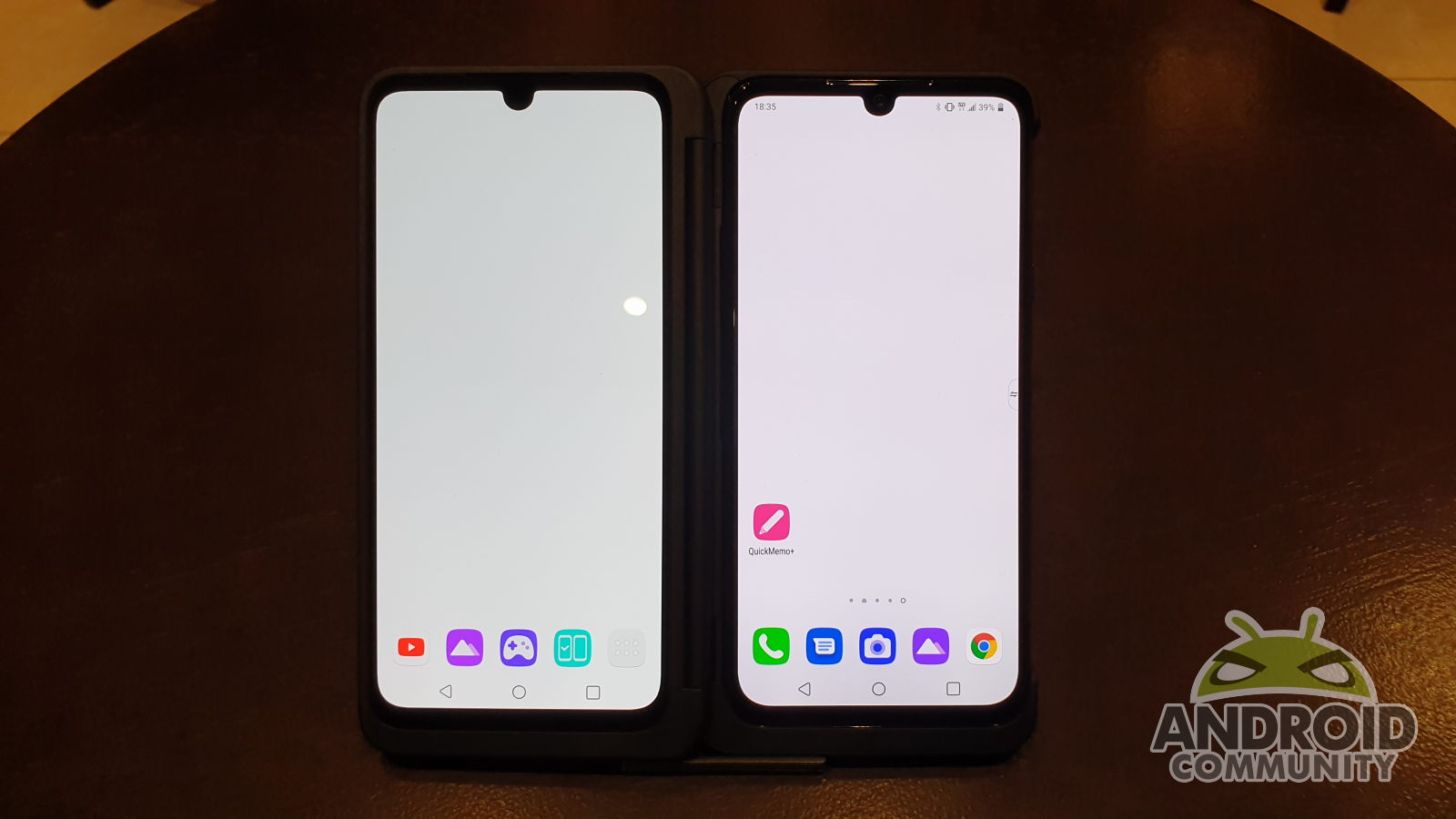
Software and Apps
Fortunately, that second screen isn’t just for show and this is where the LG G8X shines and confuses the most. the G8X with Dual Screen is a multi-tasker’s paradise and while it does let you do more than you could on a single-screen phone, it can also be easy to get lost in the sea of apps you suddenly have access to.
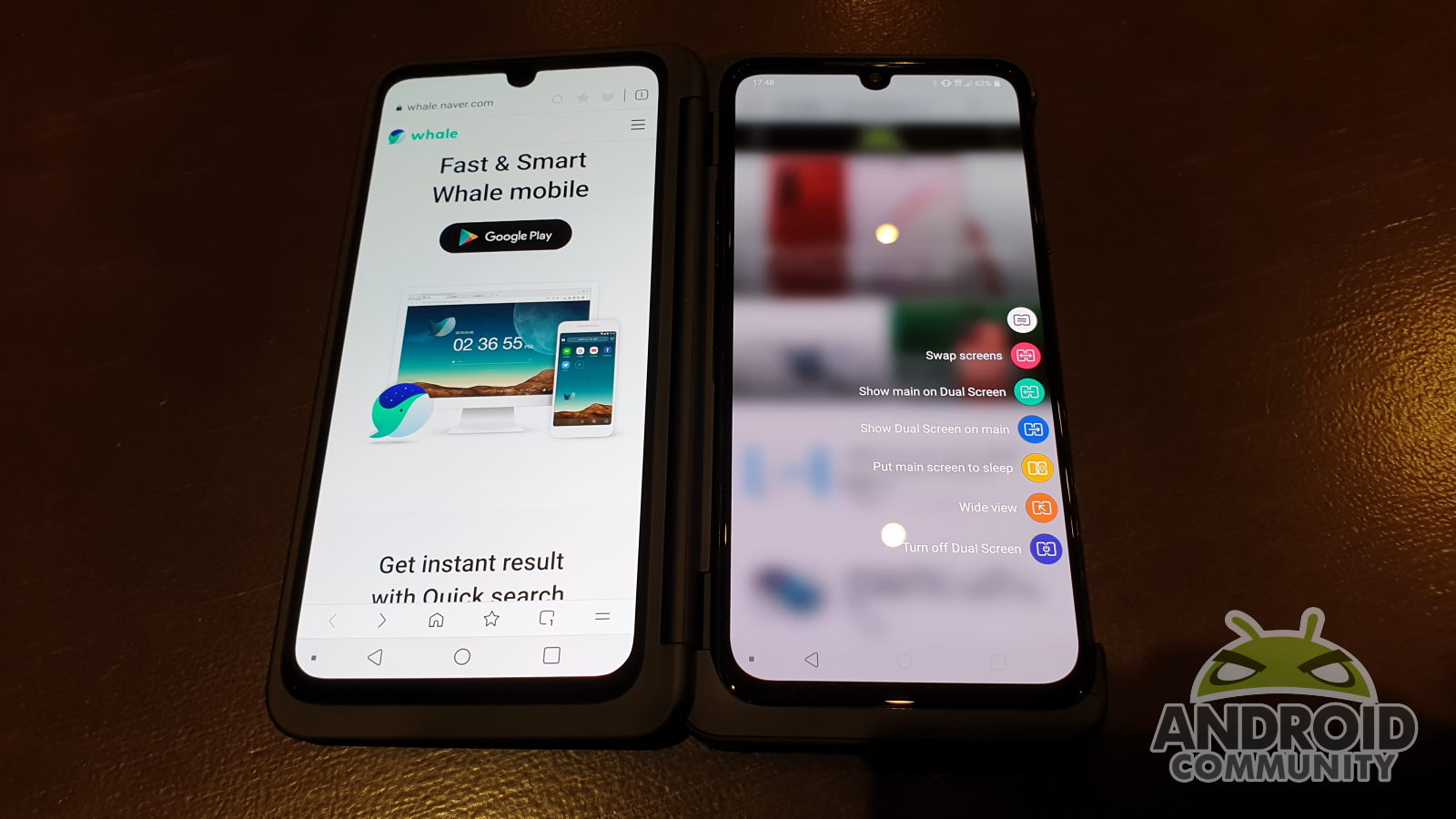
At its most basic, the Dual Screen function allows you to run two apps at the same time, with neither app pausing while you interact with the other. This does mean that YouTube and videos keep on playing on one screen while you “work” on the other screen. The special Dual Screen Tool menu lets you swap apps or send an app to the opposite screen.
Thanks to Android’s own split-screen feature, you can actually have two apps running on the phone simultaneously. That means you can have, at most three apps on your screen at the same time. Sadly, the split-screen is only possible on the phone itself and apps on the Dual Screen will always run in full.
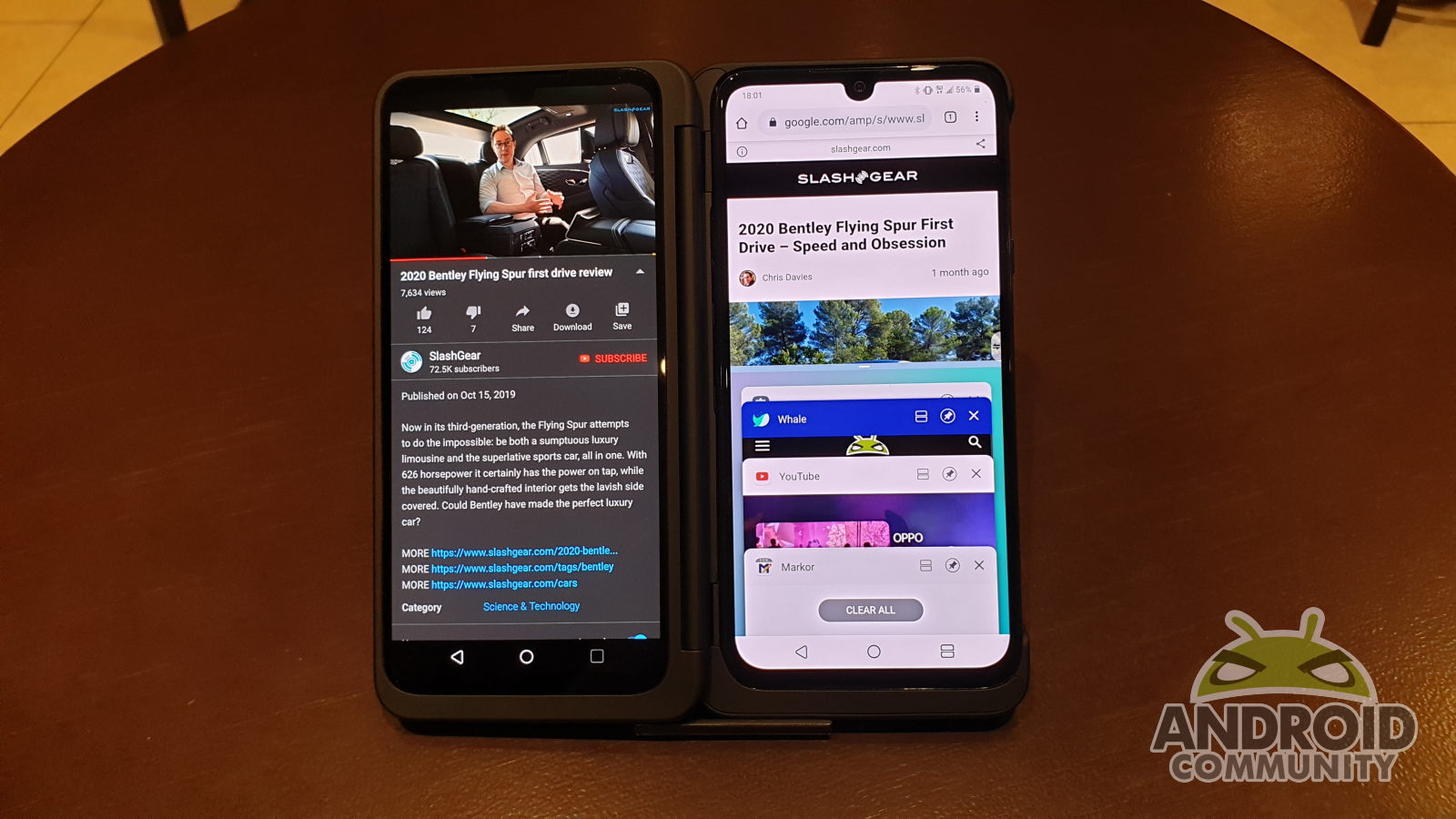
The LG G8X also has a feature that lets an app span both screens at once, creating a bigger view. Unfortunately, only the Naver Whale and Google Chrome web browsers support that at the moment, which is one of the biggest annoyances of this phone that we’ll get to later. You might think that the large gap in the middle produced by the bezels would eat up the content but that’s fortunately not the case. Unfortunately, it does look weird and needs a bit of getting used to.
The Dual Screen offers other unique and somewhat exclusive functionality. There is a Capture+ button on the Dual Screen’s pull-down menu that instantly takes a screenshot of the screen and then immediately sends it to whatever app is active on the other screen, no confirmation needed and no image saved on file. When in landscape orientation, you can have the keyboard on one screen, leaving an unobstructed view of the app on the other. You can opt to thumb type, especially with a split keyboard, or you can even turn the LG G8X into a mini-laptop, with some compromises on typing speed and accuracy, of course.
Unfortunately, what should be a pleasurable and fun experience can sometimes be disappointing at best and infuriating at worst. The Dual Screen’s biggest problem is the lack of app support. There are some apps and uses cases that would benefit greatly from spreading across two screens. Never mind YouTube or video editors (the few of them, that is), something as simple as reading an ebook is a classic use case for such a device. Unfortunately, each and every app has to add support for this feature and the motivation for supporting what may be a short-lived feature is probably very low.
Games
Mobile games are one of the examples that LG loves to use when showing off the G8X Dual Screen and, admittedly, it does that very well indeed. The phone itself is already quite capable of high-end mobile gaming, allowing players to crank up the settings to their taste. The dual screen’s GamePad puts the icing on top, or at the bottom in this case.
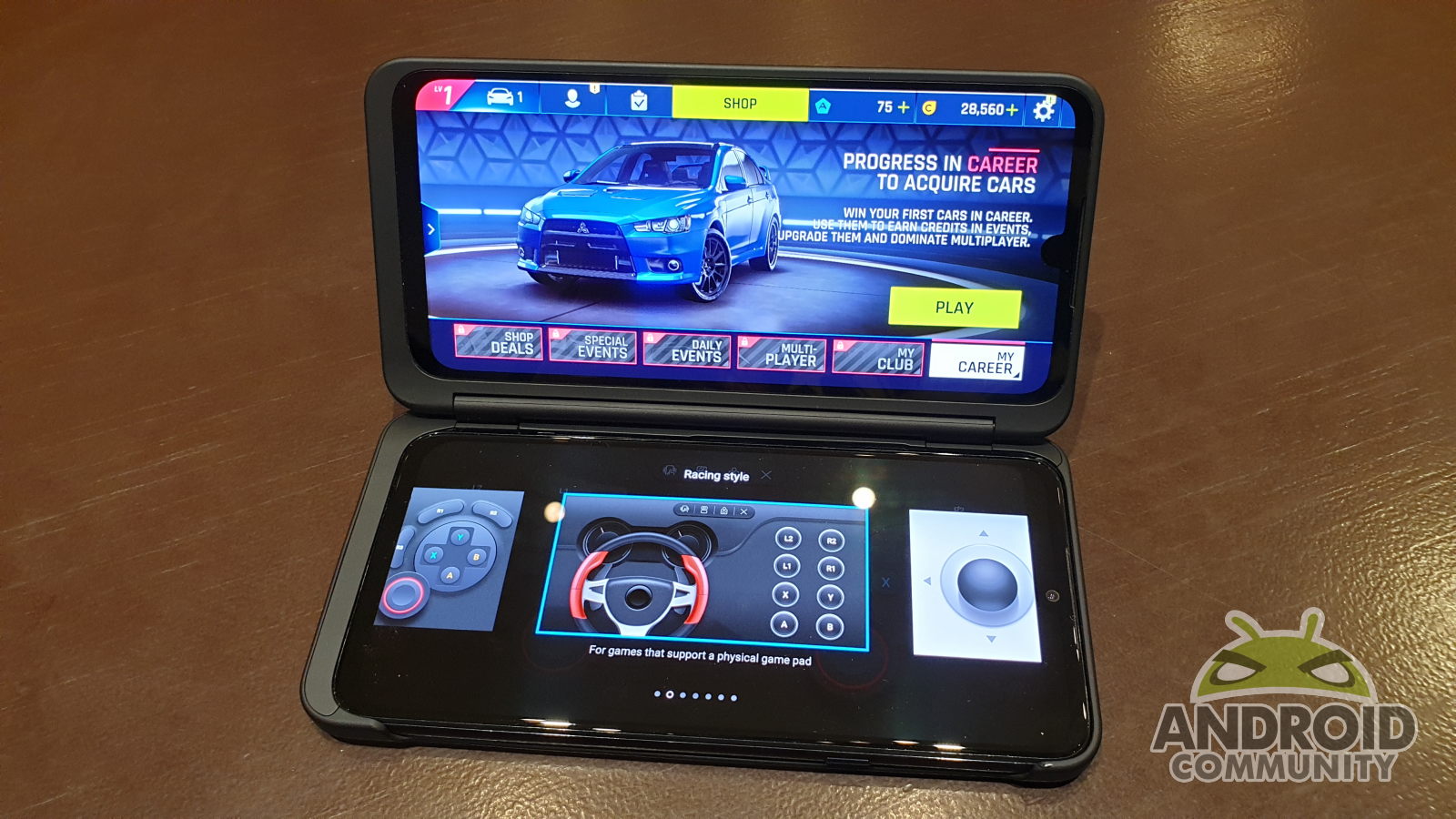
Games that already support game controllers will immediately benefit from having such a virtual gamepad that leaves the screen free from blocking thumbs. LG’s GamePad, however, goes beyond those titles and lets you create your own custom controller layout to fit your needs. Even if a game doesn’t support controllers at all, as long as you can move characters with a virtual joystick and have at most 8 actions you can do, you can map the virtual controls any which way you wish and pwn the game like a pro.
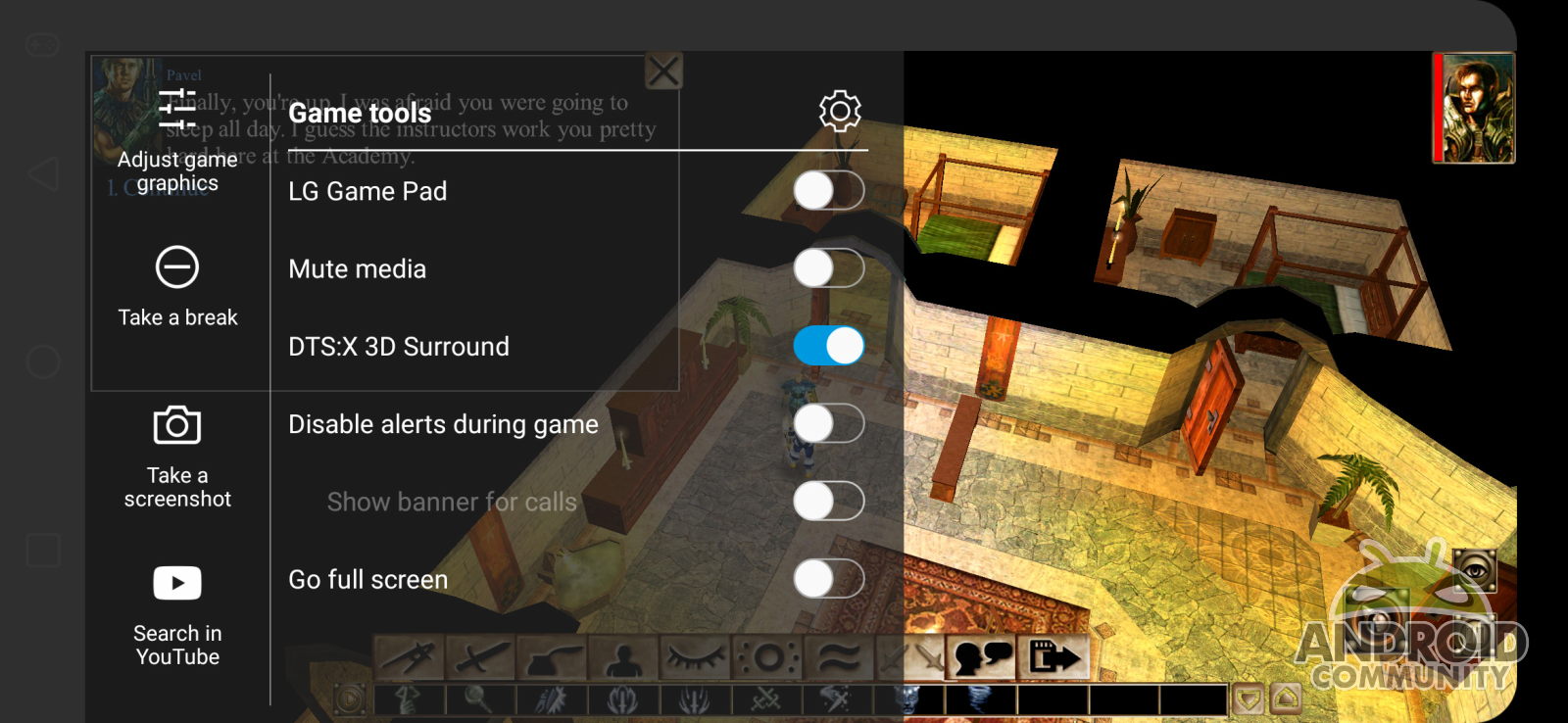
Wrap-up: A Matter of Choice
The LG G8X ThinQ Dual Screen is a wonderfully eccentric Android smartphone that won’t appeal to everyone. Some might even be rubbed the wrong way by how monstrous the whole contraption looks and feels like. You don’t always need to have the Dual Screen case on, though. You can take it off and slip into your bag (or other pockets) when you don’t need it and put it back on when you do. You don’t even need to have the dual screen turned on even if the case is. Simply turn it off to save battery and make it act like a thick protective cover for the G8X.

That may be the whole point of the phone, giving users the choice of how they want to use their phones, sometimes at their own expense. Unlike a Samsung Galaxy Fold or even an upcoming Microsoft Surface Duo, you’re not stuck with a second screen even during the times you wished you only needed to carry one. Whether you want to invest in a $2,000 phone or on a $700 phone and case combo, that choice is yours as well.


